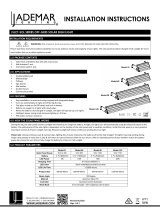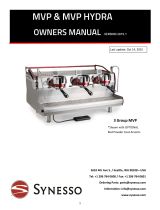Panther Freshwater 55-0102 Installation And Operating Instructions Manual
- Type
- Installation And Operating Instructions Manual
This manual is also suitable for
Panther Freshwater 55-0102 is an ideal choice for any angler who frequently trolls with a kicker motor. It can be effortlessly installed on any kicker motor featuring a threaded lt-tube, eliminating the need for drilling holes in the transom. T-4 boasts an internal motor for steering the kicker via a remote control connected through a 24-foot cable and come in handy for precision control. For rapid response, simply press a button, and the kicker smoothly responds to incremental adjustments to the desired position.
Panther Freshwater 55-0102 is an ideal choice for any angler who frequently trolls with a kicker motor. It can be effortlessly installed on any kicker motor featuring a threaded lt-tube, eliminating the need for drilling holes in the transom. T-4 boasts an internal motor for steering the kicker via a remote control connected through a 24-foot cable and come in handy for precision control. For rapid response, simply press a button, and the kicker smoothly responds to incremental adjustments to the desired position.








-
 1
1
-
 2
2
-
 3
3
-
 4
4
-
 5
5
-
 6
6
-
 7
7
-
 8
8
-
 9
9
Panther Freshwater 55-0102 Installation And Operating Instructions Manual
- Type
- Installation And Operating Instructions Manual
- This manual is also suitable for
Panther Freshwater 55-0102 is an ideal choice for any angler who frequently trolls with a kicker motor. It can be effortlessly installed on any kicker motor featuring a threaded lt-tube, eliminating the need for drilling holes in the transom. T-4 boasts an internal motor for steering the kicker via a remote control connected through a 24-foot cable and come in handy for precision control. For rapid response, simply press a button, and the kicker smoothly responds to incremental adjustments to the desired position.
Ask a question and I''ll find the answer in the document
Finding information in a document is now easier with AI
Related papers
Other documents
-
USTELLAR UT88105w User guide
-
C Cattleya 120VAC/60Hz LED Wall Sconce User manual
-
FoxESS 11 KW Installation guide
-
Cattleya LCA2331-W User manual
-
Value Junction Box Cat.6A (Class EA), UTP User manual
-
Premier MAMBA Assembly Manual
-
 JADEMAR JSLCT-SOL Series User manual
JADEMAR JSLCT-SOL Series User manual
-
 Qbic Technology TD-1070 Touch Panel PC User guide
Qbic Technology TD-1070 Touch Panel PC User guide
-
 Synesso MVP Hydra Owner's manual
Synesso MVP Hydra Owner's manual
-
Sainlogic iWFCam User manual












